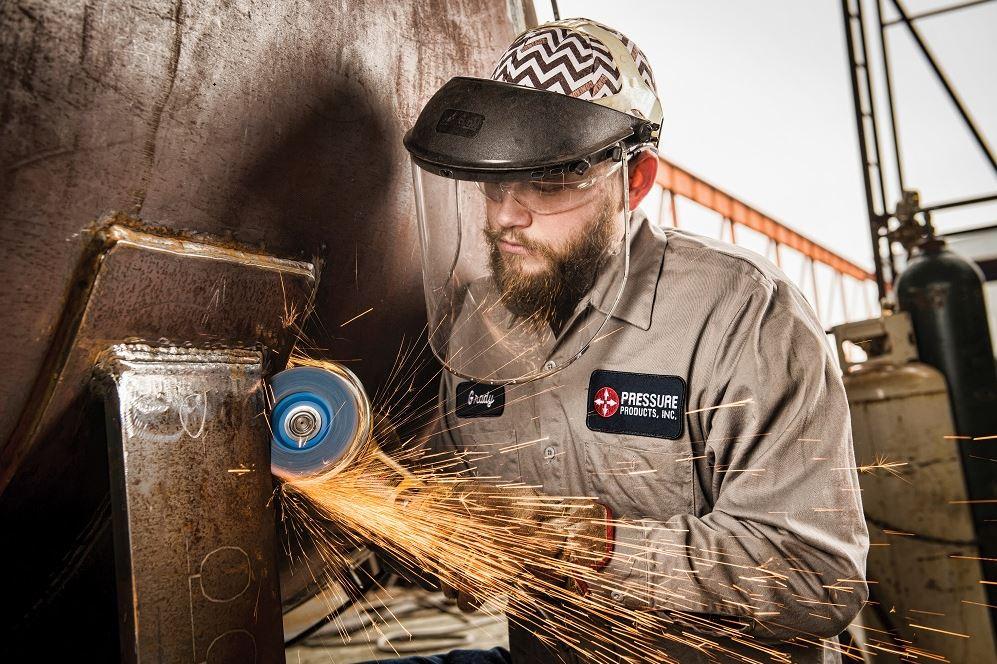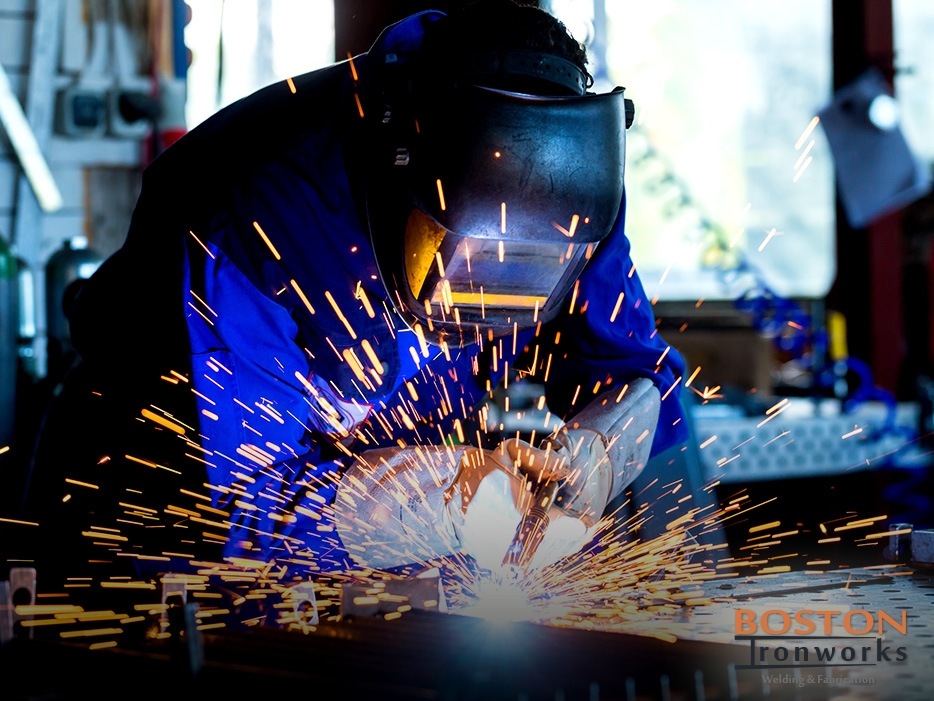Usual Welding Repair Service Issues and Just How to Address Them Successfully
Welding repair work commonly come across a range of issues that can jeopardize the stability of the final product. Common troubles consist of inadequate infiltration, porosity, and misalignment, to name a few. Each defect offers one-of-a-kind challenges that call for specific approaches for resolution. Understanding these problems is important for welders intending to enhance their skills and outcomes. This conversation will check out these typical welding repair service problems and reliable approaches to resolve them.
Poor Penetration
Poor penetration happens when the weld metal stops working to totally fuse with the base material, causing weak joints and possible structural failings. This problem usually originates from inadequate warmth input, wrong electrode angle, or incorrect welding speed. Welders might encounter inadequate infiltration because of a mistake of the necessary parameters for a certain material density or kind. Furthermore, contamination on the base product's surface can prevent efficient bonding, intensifying the trouble. To attend to poor penetration, welders ought to assure proper setups on their tools and maintain a clean work surface area. Routine evaluation of welds is advised to identify any kind of shortages early, enabling timely modifications and the avoidance of jeopardized architectural integrity in welded assemblies.
Porosity
Porosity is a typical issue in bonded joints that shows up as small gas bubbles trapped within the weld metal. This problem can jeopardize the stability of the weld, causing minimized strength and potential failing under anxiety. Montana Mobile Welding and Repair Welding. Porosity normally arises from contamination, wetness, or improper welding methods, which allow gases to get away right into the liquified weld pool. To resolve porosity, welders ought to guarantee correct surface area preparation, keep a clean workplace, and use suitable welding criteria. Furthermore, choosing the appropriate filler material and protecting gas can reduce gas entrapment. Normal assessment and screening of welds can aid recognize porosity early, ensuring timely rehabilitative activities are taken, thus maintaining the high quality and integrity of the bonded structure
Misalignment
Imbalance in welding can emerge from various variables, including improper setup and thermal development. Understanding the root triggers is essential for reliable resolution. A number of modification strategies are available to straighten parts and assure architectural stability.
Root causes of Misalignment
Welding misalignment typically comes from a range of underlying concerns that can compromise structural stability. One key cause is incorrect fit-up of parts before welding, which can bring about spaces and unequal surface areas. Variations in thermal development during the welding process can additionally cause distortion, particularly if the materials being joined have various coefficients of expansion. Additionally, poor fixturing and securing might stop working to hold parts securely in position, bring about movement during welding. Improperly kept tools, consisting of welding makers and devices, might introduce inconsistencies in the weld bead, more adding to imbalance. Ultimately, operator error, stemming from insufficient training or experience, can likewise play a substantial function in developing misaligned welds.
Improvement Strategies Offered
Resolving imbalance efficiently calls for a combination of rehabilitative methods tailored to the particular issues handy. One typical method is the use of components or jigs to hold parts in the proper placement throughout welding, ensuring consistent positioning. Additionally, pre-heating the products can help in reducing distortion and enhance fit-up. For considerable imbalance, mechanical adjustment strategies, such as making use of hydraulic jacks or clamps, can be used to remedy the setting before welding. Post-weld warm treatment might additionally be needed to soothe stress and anxieties brought on by misalignment. Careful examination and adjustment during the configuration phase can stop misalignment problems from ending up being considerable issues, advertising a smoother welding process and improving total architectural stability.
Distortion
Distortion is a typical obstacle in welding that can emerge from various variables, consisting of unequal cooling and heating. Comprehending the reasons for distortion is essential for applying reliable prevention techniques. Resolving this problem not just boosts structural honesty yet additionally enhances the general top quality of the weld.
Root causes of Distortion
When subjected to the extreme warm of welding, materials typically go through changes that can lead to distortion. This phenomenon primarily occurs from thermal expansion and tightening during the welding procedure. As the weld location warms up, the material expands; upon air conditioning, it acquires, which can produce inner stresses. In enhancement, unequal home heating across a work surface can aggravate these stresses, causing warping or bending. The sort of product also plays a substantial role; steels with differing thermal conductivity and coefficients of development might react differently, resulting in unforeseeable distortions. Inadequate joint design and insufficient fixturing can add to imbalance during welding, boosting the possibility of distortion. Recognizing these reasons is necessary for effective welding repair and prevention methods.
Avoidance Techniques
Efficient avoidance methods for distortion throughout welding concentrate on controlling heat input and making sure correct joint style. Preserving a constant heat input aids to lessen thermal development and contraction, which can cause distortion. Making use of techniques such as pre-heating the workpiece can also lower the temperature level gradient, advertising consistent heating. Furthermore, selecting appropriate joint layouts, such as T-joints or lap joints, can enhance stability and decrease stress and anxiety concentrations. Carrying out proper fixturing to secure the workpieces in area better help in keeping placement throughout the welding procedure. Lastly, staggered welding series can distribute warm a lot more uniformly, protecting against local distortion. By using these techniques, welders can greatly reduce the probability of distortion and improve the overall quality of their welds.
Cracking
Fracturing is an usual issue encountered in welding repair services, usually arising from numerous more info variables such as inappropriate cooling rates, material choice, or poor joint prep work. The event of splits can considerably jeopardize the integrity of the weld, causing potential failings during procedure. To resolve this concern, welders have to first examine the origin, guaranteeing that products are compatible and suitably selected for the specific application. Furthermore, regulating the cooling price during the welding procedure is important; quick cooling can cause anxiety and result in cracking. Correct joint style and preparation also add to lessening the risk. Implementing these approaches can enhance weld top quality and resilience, ultimately reducing the chance of fracturing in completed weldments.

Incomplete Fusion
A significant concern in welding fixings is incomplete combination, which happens when the weld steel does not appropriately bond with the base material or previous weld passes - Welding. This problem can cause weak points in the joint, possibly endangering the honesty of the welded framework. Elements contributing to insufficient fusion include not enough warmth input, improper welding strategy, and contamination of the surface areas being signed up with. To resolve this problem properly, welders must ensure correct pre-weld cleaning and surface area prep work, as well as adjust their welding parameters to achieve adequate infiltration and combination. Routine assessment during the welding process can likewise help determine incomplete fusion early, permitting prompt corrective actions to boost the general quality of the weld
Overheating
While welding fixings can boost structural integrity, overheating presents a substantial obstacle that can result in material degradation. Too much warm during welding can modify the mechanical properties of metals, leading to decreased toughness, raised brittleness, and bending. This sensation is especially essential in high-stress applications where structural integrity is critical. Determining overheating can involve visual inspections for staining or distortion, in addition to keeping an eye on temperature throughout the welding procedure. To alleviate the threats connected with overheating, welders should utilize proper methods, such as controlling warmth input, adjusting traveling rate, and making use of suitable filler materials. Furthermore, applying pre- and post-weld heat treatments can help bring back product homes and enhance the general quality of the repair service, ensuring lasting performance and security.
Often Asked Inquiries
What Are the Usual Indicators of a Welding Problem?

Exactly How Can I Evaluate My Welds for Quality?
To check welds for quality, one can make use of visual inspections, ultrasonic testing, and radiographic approaches. Each strategy guarantees structural honesty, recognizes issues, and verifies adherence to specified criteria, ultimately improving the reliability of the welded joints.
What Security Precautions Should I Take While Welding?
When welding, one must focus on safety by wearing ideal personal protective tools, making sure correct ventilation, safeguarding flammable materials away, maintaining a tidy workspace, and recognizing surroundings to avoid crashes and injuries.
Can I Fix a Weld Without Renovating the Entire Joint?
Fixing a weld without redesigning the entire joint is feasible, depending on the damage (Belgrade Welding). Methods such as grinding, including filler material, or utilizing a welding procedure can properly resolve details problems while preserving the bordering structure
What Tools Are Crucial for Reliable Welding Services?
Crucial devices for efficient welding repair work consist of a welding maker, cable brush, mill, safety equipment, clamps, and filler products. Each tool plays a vital function in making sure high quality and security throughout the repair service procedure. Porosity typically arises from contamination, moisture, or improper welding strategies, which allow gases to run away into the molten weld pool. Poorly maintained devices, including welding machines and tools, may present incongruities in the weld bead, more adding to imbalance. When subjected to the extreme warm of welding, products usually undergo changes that can lead to distortion. Breaking is a common concern encountered in welding repairs, usually resulting from different variables such as improper air conditioning prices, material option, or insufficient joint prep work. A significant concern in welding repair services is insufficient combination, which occurs when the weld metal does not adequately bond with the base product or previous weld passes.